Nov 1919
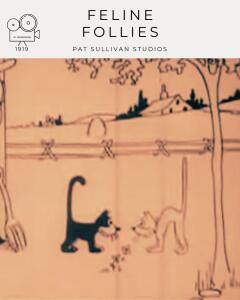
Feline Follies (Pat Sullivan Studios)
Release date: 09 Nov 1919 | Running time: 00:04:15
Black and white
Long before Mickey or Bugs, one clever black cat paved the way for animated stardom. This cartoon is considered to be the birth of Felix the Cat.May 1928
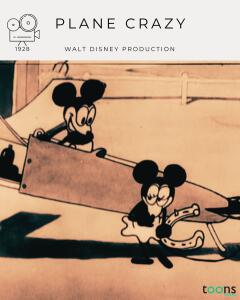
Plane Crazy (Walt Disney Studio)
Release date: 15 May 1928 | Running time: 00:05:56
Black and white Short film
The first cartoon ever animated with Mickey Mouse.Nov 1928
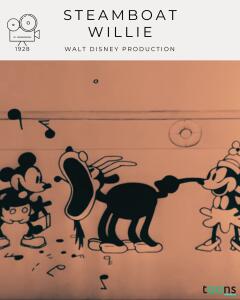
Steamboat Willie (Walt Disney Studio)
Release date: 18 Nov 1928 | Running time: 00:07:47
Black and white Short film
This one is a "must see". It's the first Mickey Mouse cartoon to be released to the public, and its success marked the star's first official appearance.Dec 1928
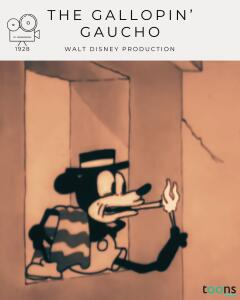
The Gallopin' Gaucho (Walt Disney Studio)
Release date: 30 Dec 1928 | Running time: 00:06:29
Black and white Short film
Mickey's Forgotten Second Outing. It demonstrates the evolution of Mickey Mouse's personality, from mischievous and rough to more polished and friendly in later cartoons.Dec 1929
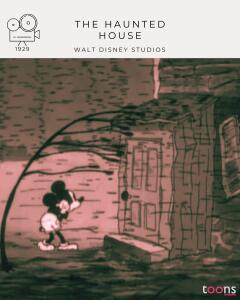
The Haunted House (Walt Disney Studio)
Release date: 02 Dec 1929 | Running time: 00:06:49
Black and white
This early Mickey Mouse short blended comedy and horror in a way that was both funny and unsettlingJul 1932
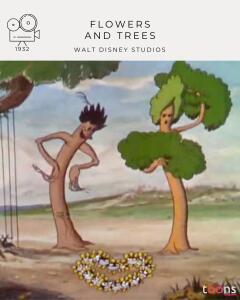
Flowers and Trees (Walt Disney Studio)
Release date: 30 Jul 1932 | Running time: 00:07:48
Short film Technicolor
As the first cartoon made in the three-strip Technicolor process, Flowers and Trees proved that color could enhance storytelling and captivate audiences. Its success encouraged studios to transition from black-and-white to color animation. Also, it earned the first Academy Award for Best Animated Short Film in 1932.Jan 1933
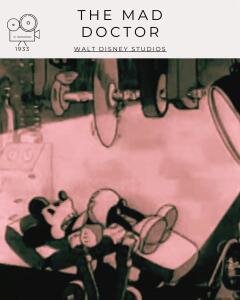
The Mad Doctor (Walt Disney Studio)
Release date: 20 Jan 1933 | Running time: 00:06:52
Black and white
The Mad Doctor is one of the darkest and most unusual entries in the classic Mickey Mouse series.Jul 1933
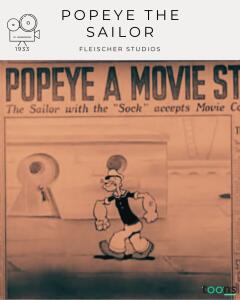
Popeye the Sailor (Fleischer Studios)
Release date: 14 Jul 1933 | Running time: 00:07:37
Black and white
Still Packs a Punch! Only on-screen appearance where Betty Boop and Popeye share the same cartoon. It remains a unique crossover moment in animation history.Aug 1933
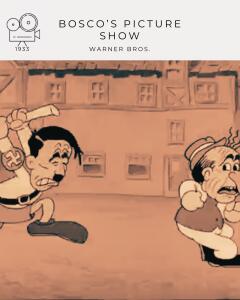
Bosko’s Picture Show (Warner Bros.)
Release date: 26 Aug 1933 | Running time: 00:06:00
Black and white
Bosko’s Picture Show was the final Looney Tunes cartoon to feature Bosko as the star under the original creators Hugh Harman and Rudolf Ising, before they left Warner Bros.Aug 1934
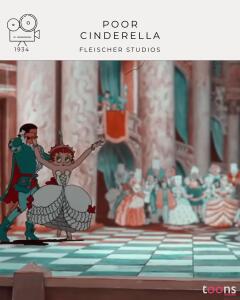
Poor Cinderella (Fleischer Studios)
Release date: 03 Aug 1934 | Running time: 00:10:35
Cinecolor Color Classics
First in the series of Fleischer's Color classics. It used Cinecolor as Walt Disney held an exclusive contract with Technicolor for its superior three-color process.Aug 1935

Pluto's Judgement Day (Walt Disney Studio)
Release date: 31 Aug 1935 | Running time: 00:08:13
Technicolor
In this surreal short, Pluto falls asleep and dreams he’s dragged to the Underworld by a group of ghostly, vengeful cats, where he’s put on trial for his past cruelty toward felines.Jan 1936
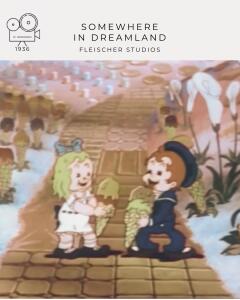
Somewhere in Dreamland (Fleischer Studios)
Release date: 17 Jan 1936 | Running time: 00:08:55
The first cartoon the Fleischer Studios made in three-strip Technicolor. While clearly a fantasy, the cartoon is deeply rooted in the real-life hardships of the 1930s, presenting one of the earliest and most powerful examples of animation as social commentary.Mar 1936
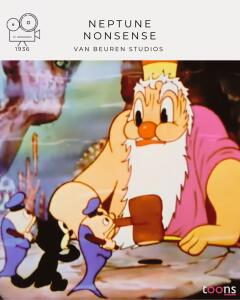
Neptune Nonsense (Van Beuren Studios)
Release date: 20 Mar 1936 | Running time: 00:07:32
Technicolor
Released in 1936 by Van Beuren Studios, Neptune Nonsense stars the iconic Felix the Cat in one of his sound-era adventures. it features one of Felix’s best late-era appearancesApr 1936
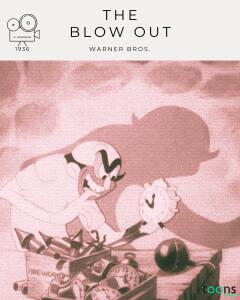
Release date: 04 Apr 1936 | Running time: 00:07:30
Black and white
This was Avery’s second cartoon for Warner Bros., and it already showed signs of the anarchic humor that would define his work.May 1936

Thru the Mirror (Walt Disney Studio)
Release date: 30 May 1936 | Running time: 00:08:00
Technicolor
Loosely inspired by Lewis Carroll’s “Through the Looking-Glass”, the film follows Mickey as he steps through his bedroom mirror into a bizarre and whimsical dream world.Nov 1936
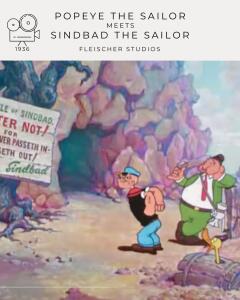
Popeye the Sailor Meets Sindbad the Sailor (Fleischer Studios)
Release date: 27 Nov 1936 | Running time: 00:16:33
Technicolor
The first of three two-reel (long-form) color specials featuring Popeye and only Popeye cartoon ever to be nominated for the Academy Award.Mar 1937
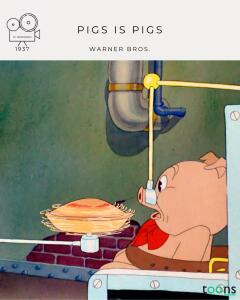
Release date: 27 Mar 1937 | Running time: 00:07:16
Technicolor
Pigs Is Pigs is a moral comedy disguised as slapstick, poking fun at greed, indulgence, and lack of self-control. Like many Merrie Melodies of the era, it features lush musical synchronization.Apr 1937
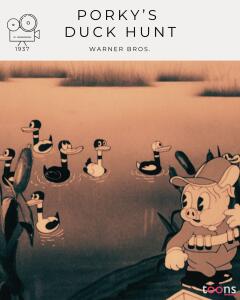
Porky’s Duck Hunt (Warner Bros.)
Release date: 17 Apr 1937 | Running time: 00:08:47
Black and white
First appearance of Daffy Duck, one of Warner Bros.' most iconic characters. A pivotal shift toward more manic, irreverent humor in animation.Nov 1937
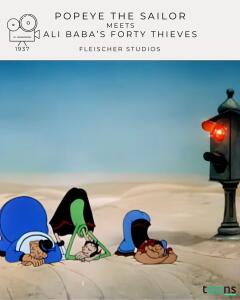
Popeye the Sailor Meets Ali Baba's Forty Thieves (Fleischer Studios)
Release date: 26 Nov 1937 | Running time: 00:17:15
Technicolor
Bigger Battles, Bolder Animation! Second color Popeye special animated fully in Technicolor and a true masterpiece that you just have to watch.Dec 1937
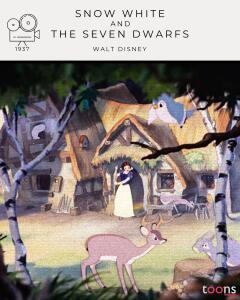
Snow White and the Seven Dwarfs (Walt Disney Studio)
Release date: 21 Dec 1937 | Running time: 01:28:00
Feature film Technicolor
The success of Snow White proved that animation could sustain a feature-length narrative and deliver powerful emotional experiences. It launched the Disney studio into a new era and laid the foundation for the modern animated film industry.